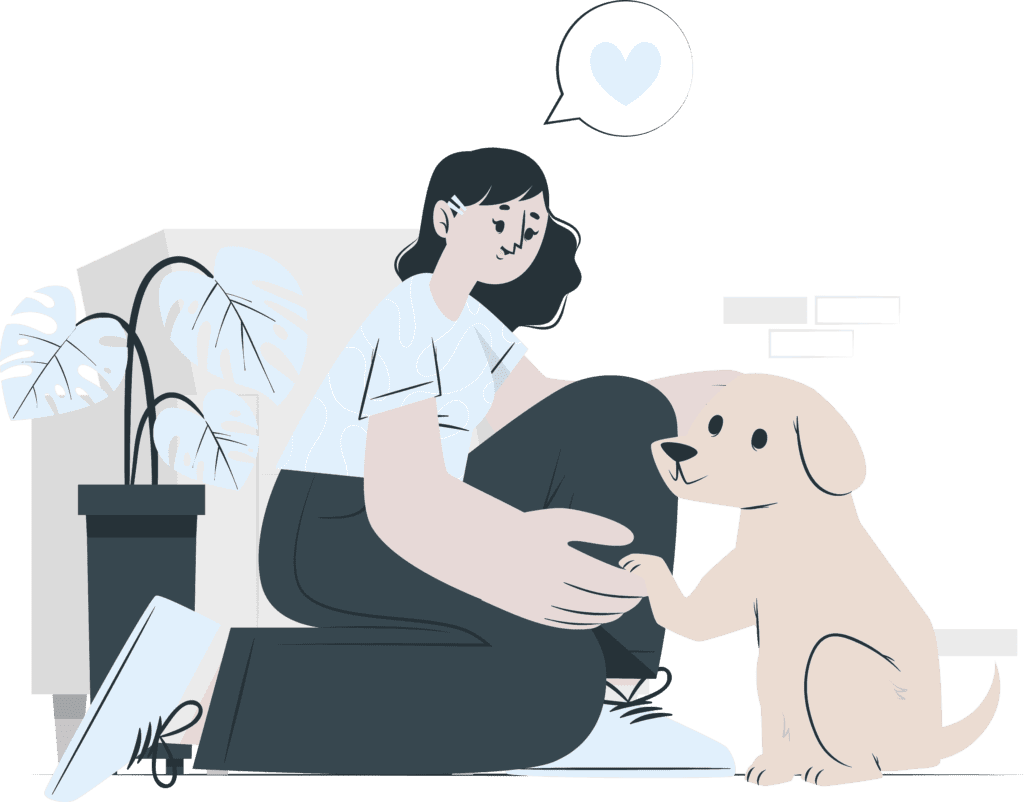Canisterapy refers to the therapeutic contact between a dog and a human. A dog can bring joy with its presence wherever it is lacking. And there is no doubt that a smile heals. But it's not just about the joy that dogs bring to people for a long time now.
Canistherapy
It is a therapeutic method using dogs (canis in Latin means dog). Canisterapy is a method that is a supportive part of overall care for humans, utilizing the positive impact of a dog on health, thereby helping to improve the quality of life for individuals. Especially in children, contact with animals is very effective – the dog becomes their friend, and therefore, children are more receptive to care, cooperate, and positive therapeutic results are achieved.
For example, in speech therapy. The dog understands only precise commands, so the child has a great motivation to pronounce correctly. When the dog brings a toy or sits on command, the child immediately sees the effect of their words. Thanks to the little dog, we can vividly illustrate caring for others to children or how to behave towards others. Sometimes children tell the dog things they would never confide in an adult.




Types of Canisterapy
AAA - Activities Assisted by Dogs (social activity)
Natural contact between a person and an animal aimed at improving the client's quality of life or the natural development of their social skills. (visits to facilities, such as with seniors)
AAT – Animal-Assisted Therapy
Supportive rehabilitation method, targeted contact between a person and an animal, aimed at improving the mental and physical condition of the client.
AACR - crisis intervention with the help of dogs
Natural contact between an animal and a person who has found themselves in a crisis environment, aimed at relieving stress and overall improving the psychological or physical condition of the client.
What can Canisterapy be focused on?
Activities and activities from practice
All activities are tailored according to the client's needs, such as eliciting joy, calming, increasing focus, reducing fear of dogs, decreasing aggression, developing gross and fine motor skills, improving communication willingness, speech therapy prevention,....
Canisterapie is a suitable component for improvement
Neurodevelopmental disorders (ADHD, ADD, ASD, learning disorders, etc.).
Maintaining attention, practicing gross and fine motor skills, releasing spasms, developing imagination, communicativeness, vocabulary, increasing self-confidence, a sense of protection and the possibility of relaxation (positioning).
Physical disabilities
Motivation for rehabilitation, a source of enrichment and variety in life, improvement in communication with others, breaking down barriers of loneliness, diverting attention from one's own difficulties, and increasing the sense of security.
Sensory impairment
Blind (independence, sense of security, improved communication, increased self-esteem). Deaf (increased independence, self-sufficiency, and self-confidence). With impaired smell (increased sense of security). With impaired voice (improved communication).
In speech therapy
For practicing correct pronunciation, expanding vocabulary, and regulating speech speed.
In geriatrics
Replacement of physical contact between people, increases the sense of security, alleviates feelings of loneliness, improves communication with the surroundings, lifts from nostalgia and depression, stimulates rehabilitation, physiotherapy, has a positive effect on calming, thereby reducing the use of antidepressants, sedatives, and hypnotics.
Epilepsy
Calming factor, sense of safety, freedom, and independence, use in rehabilitation, the possibility of recognizing an approaching seizure, and warning.
For mental and psychiatric illnesses
Increasing communication, diverting attention from the patient's problems, promoting the patient's resocialization, reducing apathy, passivity, and numbness, aiding in the treatment of drug addiction, and assisting in the treatment of abused and maltreated children.
Positioning
It is an individual therapy based on direct contact between the client and dogs.
